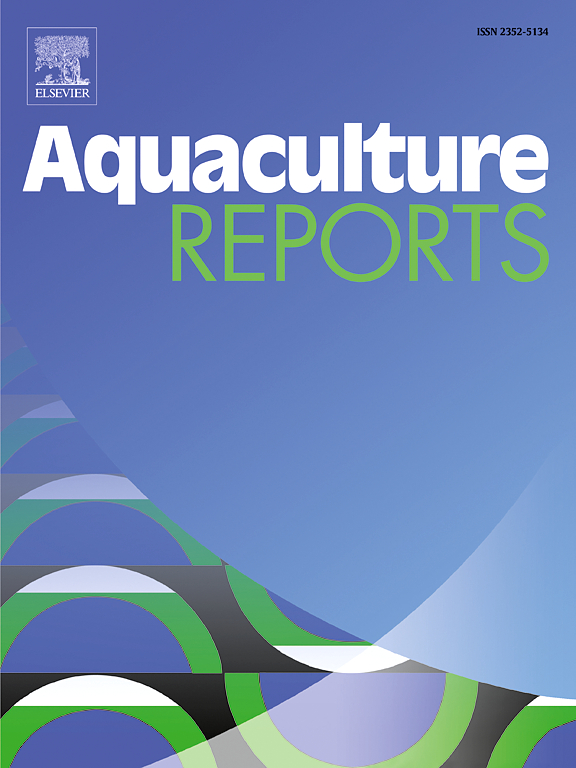High-fat diet-induced liver injury in Channa argus through lipid metabolism, anti-oxidative status, apoptosis, and inflammation
IF 3.2
2区 农林科学
Q1 FISHERIES
引用次数: 0
Abstract
Channa argus, a valuable fish species in southern Chinese aquaculture, is susceptible to fatty liver disease. To investigate the mechanism of liver injury in C. argus caused by a high-fat diet, fish were fed diets with varying fat levels: control (CK, 11 % fat), L16 (16 % fat), and L22 (22 % fat) for 90 days. Liver condition and the expression of genes related to lipid metabolism were assessed. The results showed that a 22 % fat level diet can influence liver cell status. After 90 days of feeding, the L16 and L22 groups had higher FW, WGR, and SGR than the CK group, the result of FCR in L22 group was lower than the CK and L16 groups, mortality rates were similar, and the results of HSI and VSI in L22 group were higher than the CK group, with no significant difference in HSI between the L16 and L22 groups. Moreover, a 22 % fat level diet can significantly inhibit peroxisome proliferator-activated receptor alpha (PPARα)-related fatty acid transport and oxidation gene expression levels and improve PPARγ-related lipid synthesis gene expression levels to increase triglyceride levels in the serum and liver. Lipid accumulation can significantly elevate serum transaminase and pro-inflammatory factors, indicating that a diet with 22 % fat can induce liver injury. Anti-oxidative status-related biochemical parameters were determined; the malondialdehyde level was increased, and anti-oxidative indices (including catalase, superoxide dismutase, glutathione, glutathione-S-transferase, and total antioxidant capacity) were decreased in the L22 group, which also induced DNA damage and inhibited the expression levels of nuclear factor erythroid 2-related factor 2 (Nrf2) pathway-related antioxidant genes to suppress antioxidant ability. At 90 days, the L22 group exhibited a significant upregulation of mRNA expression levels for liver inflammatory factors, including interleukin-1β (IL-1β), IL-8, IL-10, and tumor necrosis factor-α (TNF-α). At 90 days, the L22 group exhibited upregulation of pro-inflammatory genes NF-κB, p65, and MyD88, alongside increased expression of apoptosis-related genes Bax, caspase-3 (Cas3), Cas8, and Cas9. Innate immune-related biochemical parameters were measured by ELISA, the results showed that decreased complement 3 (C3), C4 and lysozyme levels were determined in serum of the L22 group. Following a 90-day feeding trial, C. argus was intraperitoneally injected with Aeromonas hydrophila, resulting in a significant decrease in survival rate in the L22 group. In summary, a 22 % dietary fat level can promote lipid deposition by altering lipid metabolism, leading to liver injury, compromised antioxidant defenses, increased expression of inflammatory genes in the liver, immune system damage, and decreased disease resistance.
求助全文
约1分钟内获得全文
求助全文
来源期刊

Aquaculture Reports
Agricultural and Biological Sciences-Animal Science and Zoology
CiteScore
5.90
自引率
8.10%
发文量
469
审稿时长
77 days
期刊介绍:
Aquaculture Reports will publish original research papers and reviews documenting outstanding science with a regional context and focus, answering the need for high quality information on novel species, systems and regions in emerging areas of aquaculture research and development, such as integrated multi-trophic aquaculture, urban aquaculture, ornamental, unfed aquaculture, offshore aquaculture and others. Papers having industry research as priority and encompassing product development research or current industry practice are encouraged.
 求助内容:
求助内容: 应助结果提醒方式:
应助结果提醒方式:


